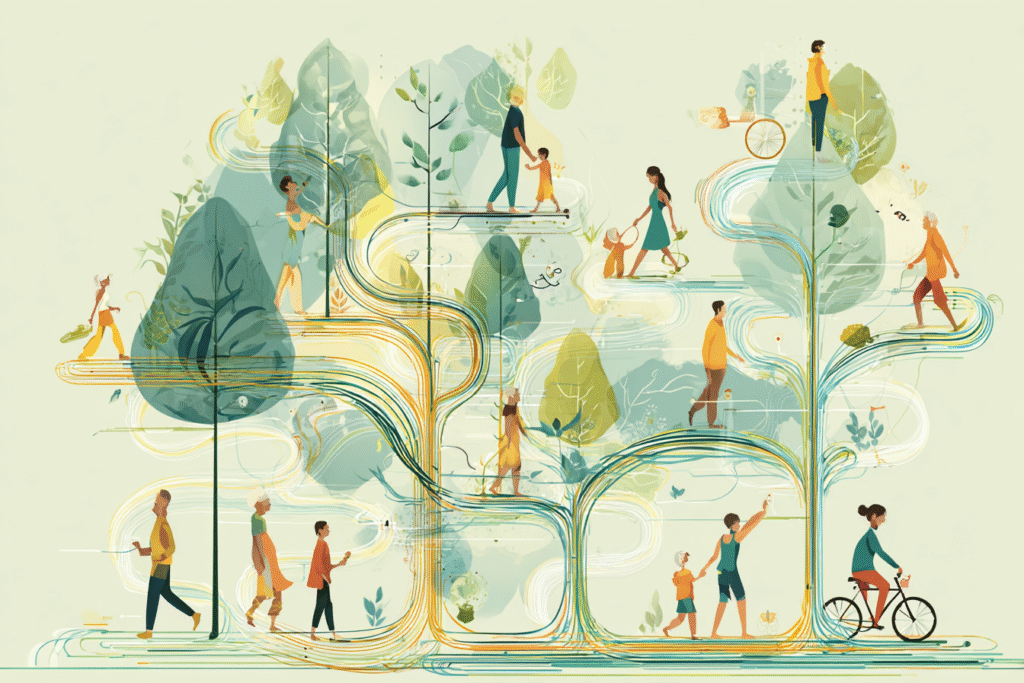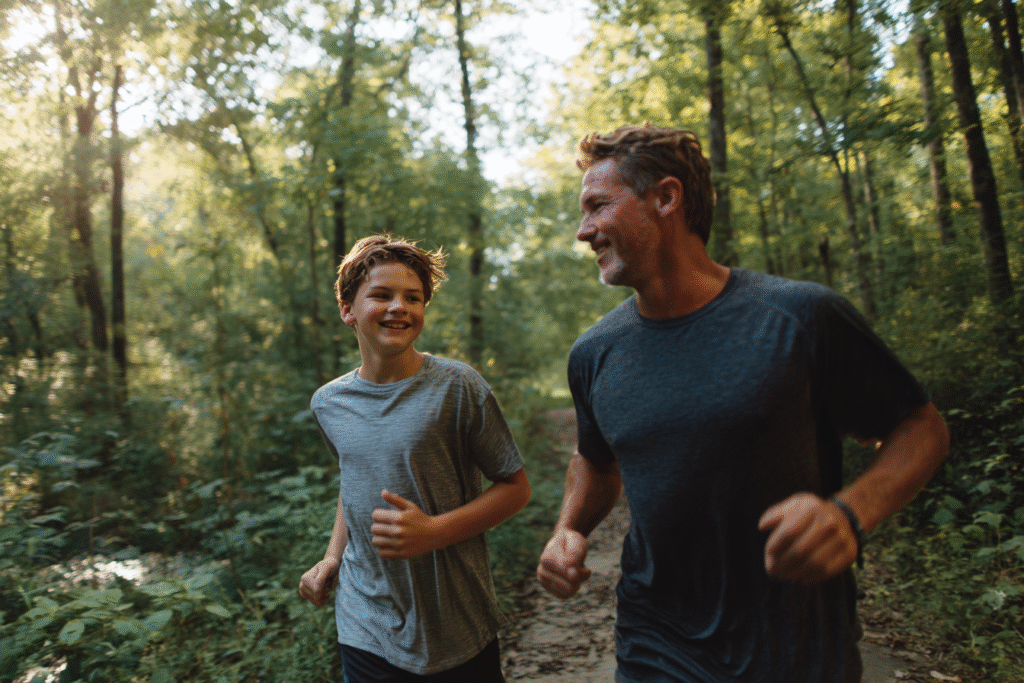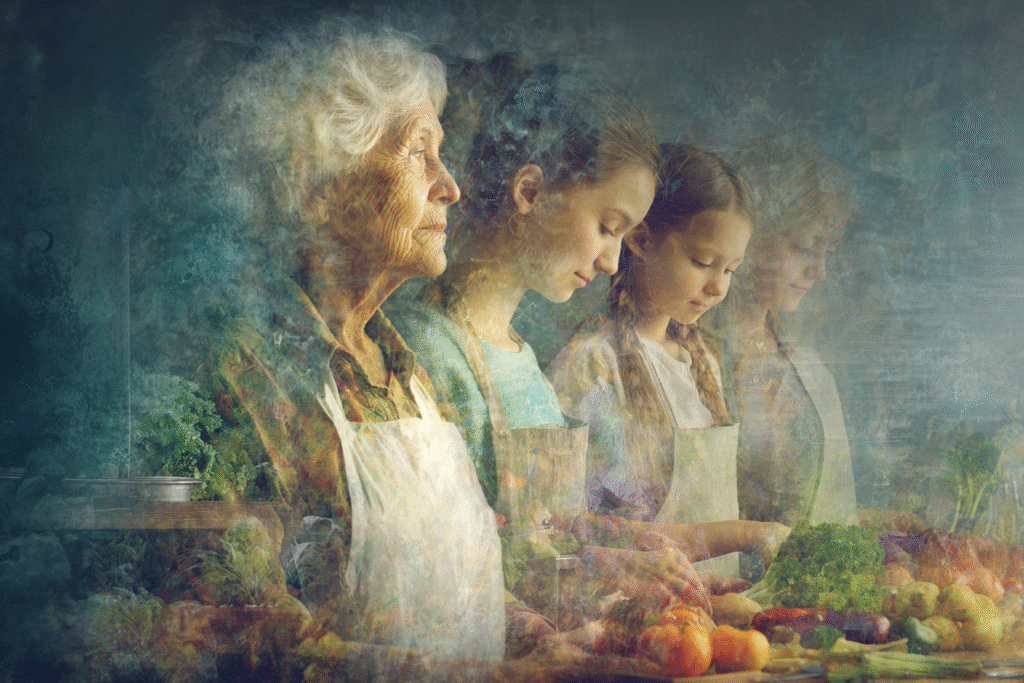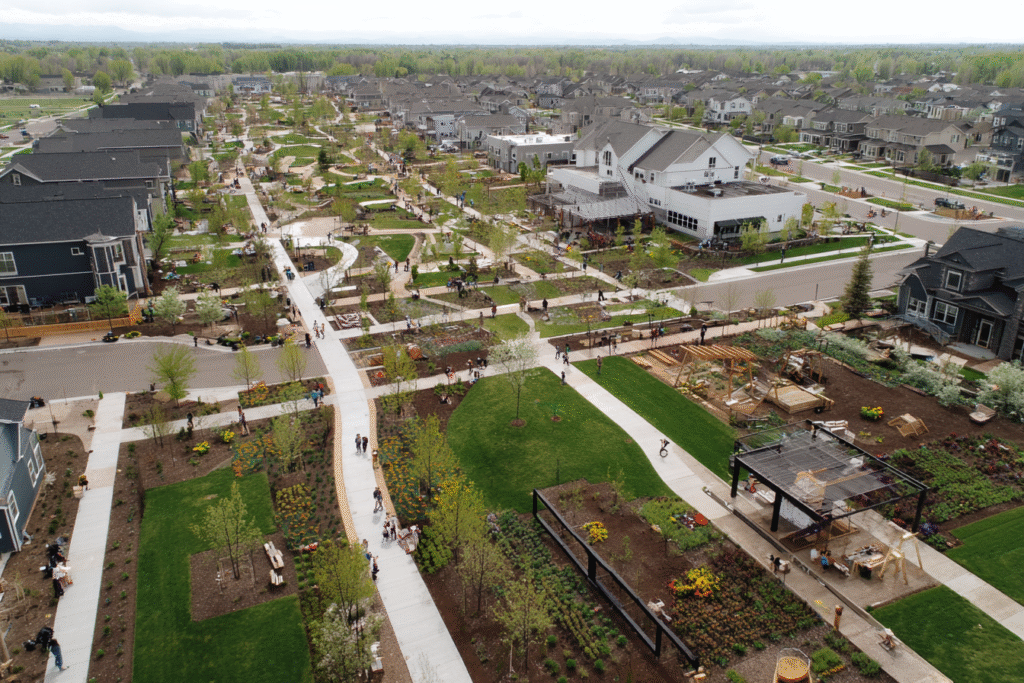You don’t just transform yourself when you change your health, you become a catalyst.
Note: This article is for educational and informational purposes only. See full disclaimer at the end.
The morning Monica started taking walking breaks at work instead of coffee breaks, she had no intention of starting a movement. She wasn’t preaching about the benefits of movement or sharing research about sedentary behavior. She was simply walking.
Within three weeks, four colleagues had joined her. Within two months, their company had instituted “walking meetings” as an official option. Sarah never gave a single health lecture—she just walked.
This is how health transformation actually spreads through human networks: not through evangelism or education, but through the quiet power of embodied change.
The science of social contagion reveals that our health behaviors ripple outward through our social networks in ways we rarely recognize, reaching people we may never meet, influencing lives in ways we’ll never know.

The Science of Social Influence
Research from the Framingham Heart Study, which tracked social networks over 32 years, discovered something remarkable: health behaviors spread through social connections like waves through water [1]. When one person improves their health, the effects can be detected up to three degrees of separation—your friends, your friends’ friends, and even their friends experience measurable changes in their own health behaviors.
But here’s what makes this fascinating: the influence isn’t primarily through direct interaction or conscious imitation. A friend who lives hundreds of miles away can have as much influence on your health behaviors as one who lives next door [1]. Geographic distance doesn’t matter as much as social distance. The connection itself carries the influence.
This happens through multiple mechanisms that operate below our conscious awareness [3]. We unconsciously mirror the behaviors of those we feel connected to. We internalize new norms about what’s acceptable or desirable. We see expanded possibilities for our own lives through witnessing others’ transformations.
Being Is More Powerful Than Preaching
Remember yesterday’s exploration of how health becomes identity rather than behavior? That identity shift creates exponentially more powerful ripple effects than behavior change alone. When someone shifts from “trying to eat better” to “being someone who nourishes their body,” they’re not just changing actions—they’re modeling a entirely different way of being.
Marcus discovered this when he stopped trying to convince his teenage son to exercise and simply became someone who loved movement. No lectures about health benefits. No guilt trips about screen time. He just lived his joy in physical activity—training for a marathon, doing handstands in the backyard, dancing while cooking dinner. Six months later, his son asked to join him for a run. Not because Marcus convinced him, but because he saw something in his father’s relationship with his body that he wanted for himself.
This is the paradox of influence: the less we try to change others, the more influential we become [10]. When we focus on our own transformation rather than others’ behaviors, we create what researchers call “behavioral affordances”—we make new possibilities visible and accessible simply by embodying them.

The Workplace Transformation
Professional environments offer unique opportunities for health ripples because of their structured social networks and repeated interactions [7]. When leaders model healthy behaviors—not through wellness programs or mandates but through visible personal choices—entire organizational cultures can shift.
Consider what happens when a manager starts taking proper lunch breaks instead of eating at their desk. They’re not implementing a policy or sending a memo. They’re simply demonstrating that it’s acceptable to prioritize nourishment and restoration. This single behavior can cascade through an organization, giving others permission to care for themselves.
The research on workplace health interventions reveals that the most successful approaches aren’t top-down programs but peer-to-peer influences [7]. When colleagues see someone at their level successfully integrating health practices into their workday, it becomes achievable rather than aspirational.
The Family System Dynamics
Within families, health behaviors operate through even more complex channels of influence [4]. Family systems theory shows that families maintain equilibrium through interconnected patterns—when one member changes, the entire system must adjust. This can create resistance, but it also means that one person’s health transformation inevitably affects everyone in the household.
The key insight from family health research is that modeling matters more than teaching [8]. Children don’t do what we say; they do what we do. They absorb our relationship with food, movement, stress, and self-care through thousands of micro-observations. When parents embody healthy behaviors rather than enforce them, children naturally integrate these patterns into their own lives.
But here’s what’s often missed: influence flows in multiple directions within families [5]. Children can transform their parents’ health behaviors just as powerfully as the reverse. When a child gets excited about cooking, the whole family’s nutrition can improve. When a teenager takes up running, parents often find themselves lacing up shoes they haven’t worn in years.

Your Journey Can Reaches Thousands
Social media and digital networks have fundamentally altered how health behaviors spread [10]. A single person’s transformation, shared authentically online, can influence thousands of people they’ve never met. But this amplification comes with complexity.
The research on digital health contagion shows that authenticity matters more than perfection [10]. People are influenced not by curated success stories but by genuine struggles and incremental progress. When someone shares both their victories and setbacks, they create what researchers call “perceived attainability”—others see the transformation as possible for themselves.
Maria learned this when she started documenting her journey with chronic illness management on social media. She didn’t position herself as an expert or share advice. She simply documented her daily experiments with sleep, nutrition, and stress management. Within a year, she had inadvertently created a community of thousands supporting each other through similar challenges. Her vulnerability became a catalyst for collective transformation.
The Community Cascade
At the community level, individual health transformations can reach a critical mass that shifts entire cultural norms [9]. When enough people in a neighborhood start walking, infrastructure changes follow—sidewalks get repaired, walking paths get created, community walking groups form. Individual choices aggregate into collective change.
This is particularly powerful in traditionally underserved communities where health resources may be limited [12]. When community members see their peers successfully managing diabetes or losing weight despite systemic barriers, it challenges the narrative that health is only for the privileged. These peer models become more influential than any external intervention.

The Intergenerational Echo
Perhaps the most profound ripple effects are those that echo across generations. The health behaviors we model today shape not just our children’s health, but their children’s and beyond [6]. Epigenetic research shows that our lifestyle choices can influence gene expression in ways that affect multiple generations.
But beyond the biological transmission, there’s the cultural transmission of health beliefs and behaviors [11]. When we transform our relationship with health, we’re not just changing our own lives—we’re potentially shifting the health trajectory of our entire lineage.
The Shadow Side of Influence
It’s important to acknowledge that not all health contagion is positive [2]. Negative health behaviors can spread through networks just as readily as positive ones. Stress, anxiety, and unhealthy coping mechanisms can ripple outward, affecting those around us.
This is why our own health transformation isn’t just a personal matter—it’s a social responsibility. When we manage our stress effectively, we reduce the stress load on everyone around us. When we model healthy coping strategies, we offer alternatives to those who might otherwise turn to destructive patterns.

The Quiet Revolution
What we’re really talking about here is a quiet revolution in how health change happens. Not through public health campaigns or medical interventions, but through the accumulated power of individual transformations rippling through social networks.
Every person who decides to prioritize sleep influences their partner’s sleep patterns. Every parent who models joyful movement shapes their child’s relationship with their body. Every colleague who sets boundaries around work stress gives others permission to do the same. Every friend who chooses sobriety makes that choice more visible and viable for others.
You may never know the full extent of your influence. The colleague who started walking because you did might prevent a heart attack you’ll never hear about. The friend who saw you manage anxiety without medication might find their own path to mental health. The child who absorbed your peaceful relationship with food might never develop the eating disorder that plagued previous generations.
This is the paradox and the promise of the ripple effect: we can’t control it, we can’t measure it, we often can’t even see it—but it’s always happening. Every choice we make about our health sends waves through the human network, touching lives in ways we can’t imagine.
The question isn’t whether you’re influencing others’ health—you already are, simply by existing in relationship with other humans. The question is: what kind of ripples are you creating? What possibilities are you making visible through your own embodied choices? What transformations are you catalyzing simply by living your own?
Your health journey was never just about you. It’s about everyone you’re connected to, everyone they’re connected to, and the endless web of human influence that shapes our collective wellbeing. In transforming yourself, you become part of transforming the world—one quiet ripple at a time.
See you in the next insight.
Comprehensive Medical Disclaimer: The insights, frameworks, and recommendations shared in this article are for educational and informational purposes only. They represent a synthesis of research, technology applications, and personal optimization strategies, not medical advice. Individual health needs vary significantly, and what works for one person may not be appropriate for another. Always consult with qualified healthcare professionals before making any significant changes to your lifestyle, nutrition, exercise routine, supplement regimen, or medical treatments. This content does not replace professional medical diagnosis, treatment, or care. If you have specific health concerns or conditions, seek guidance from licensed healthcare practitioners familiar with your individual circumstances.
References
The references below are organized by study type. Peer-reviewed research provides the primary evidence base, while systematic reviews synthesize findings.
Peer-Reviewed / Academic Sources
- [1] Christakis, N. & Fowler, J. (2013). Social contagion theory: examining dynamic social networks and human behavior. PMC. https://www.ncbi.nlm.nih.gov/pmc/articles/PMC3830455/
- [2] Vogel, E. et al. (2023). Social contagion, violence, and suicide among adolescents. PMC. https://pmc.ncbi.nlm.nih.gov/articles/PMC10090320/
- [3] Umberson, D. & Montez, J.K. (2010). Social Relationships and Health: A Flashpoint for Health Policy. PMC. https://pmc.ncbi.nlm.nih.gov/articles/PMC3150158/
- [4] Lau, E.Y.H. et al. (2022). The role of the family in health promotion: a scoping review of models and mechanisms. PMC. https://pmc.ncbi.nlm.nih.gov/articles/PMC9673498/
- [5] Kessing, M.L. et al. (2021). Family as a health promotion setting: A scoping review of conceptual models of the health-promoting family. PMC. https://pmc.ncbi.nlm.nih.gov/articles/PMC8041208/
- [6] Ostovarfar, J. et al. (2023). Improving family health climate, effect of role modeling and maternal support in female students. BMC Primary Care. https://bmcprimcare.biomedcentral.com/articles/10.1186/s12875-023-02015-7
Government / Institutional Sources
- [7] National Center for Biotechnology Information. (2001). Individuals and Families: Models and Interventions – Health and Behavior. NCBI Bookshelf. https://www.ncbi.nlm.nih.gov/books/NBK43749/
- [8] Department of Homeland Security. (2022). Be a Healthy Role Model for Children. DHS. https://www.dhs.gov/employee-resources/news/2022/03/17/be-healthy-role-model-children
- [9] Zimmerman, F.J. (2019). Family-Focused Public Health: Supporting Homes and Families in Policy and Practice. PMC. https://www.ncbi.nlm.nih.gov/pmc/articles/PMC6435478/
Industry / Technology Sources
- [10] Konstantinou, P. et al. (2023). A qualitative study exploring the social contagion of attitudes and uptake of COVID-19 vaccinations. Taylor & Francis Online. https://www.tandfonline.com/doi/full/10.1080/21645515.2023.2260038
- [11] Oxford Academic. (2022). Role of the family in health promotion: a scoping review of models and mechanisms. Health Promotion International. https://academic.oup.com/heapro/article/37/6/daac119/6833053
- [12] UNICEF. (2023). Social and behaviour change. https://www.unicef.org/social-and-behaviour-change


